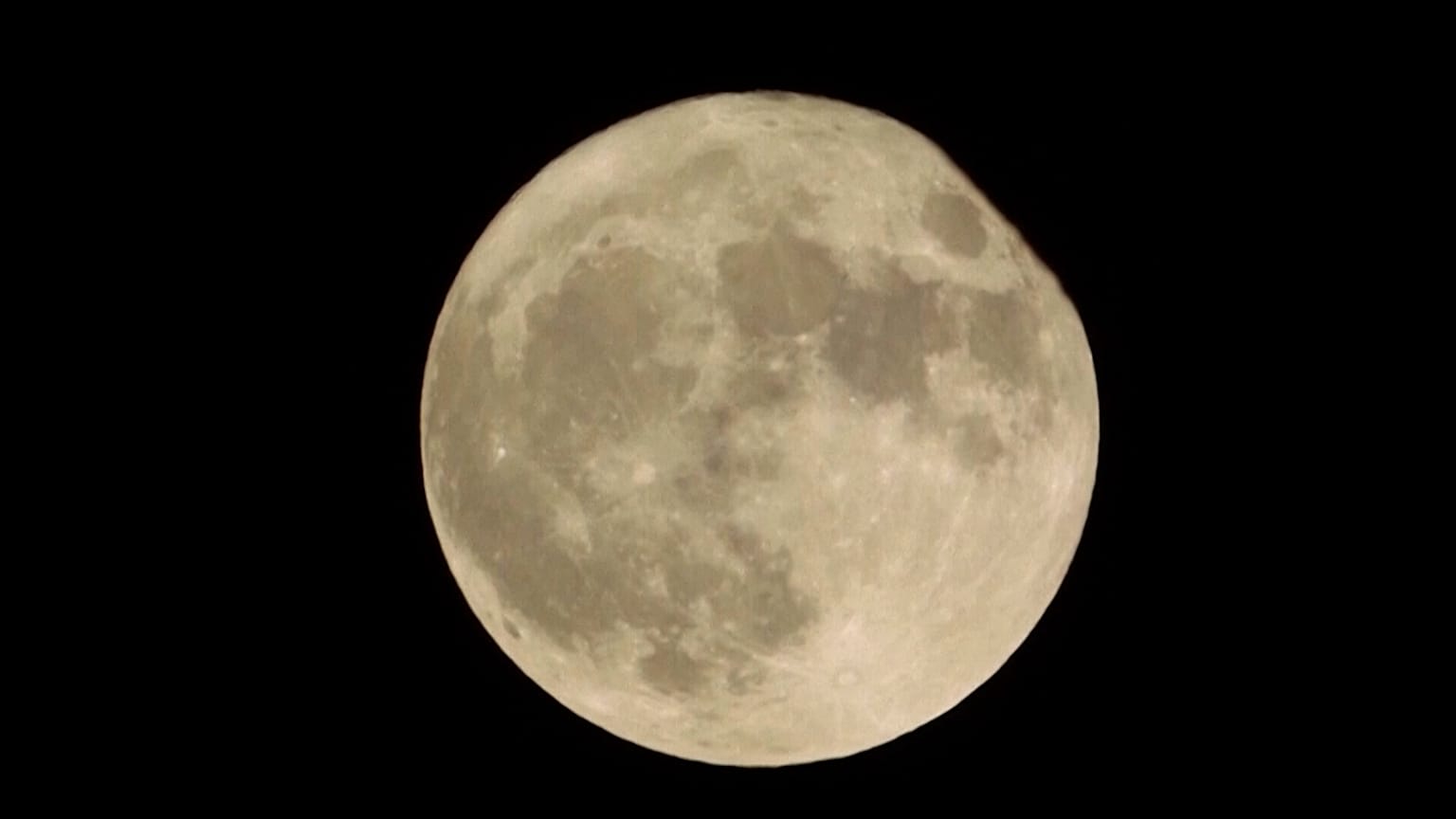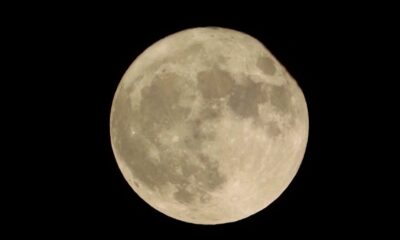Science
New Research Traces Moon’s Precursor Planet Theia to Inner Solar System

A recent study has revealed that Theia, the long-lost planet believed to have played a crucial role in the formation of the Moon, likely originated in the inner Solar System. This finding emerges from a collaborative effort by astronomers in France, Germany, and the United States, who analyzed both ancient lunar and terrestrial rocks for clues about Theia’s origin.
The prevailing theory, known as the giant impact hypothesis, suggests that Theia collided with the early Earth approximately 4.5 billion years ago. The debris from this monumental collision eventually formed the Moon, with remnants of Theia contributing to both celestial bodies. Despite this widely accepted narrative, Theia itself vanished billions of years ago, leaving scientists without direct chemical evidence to support their hypotheses regarding its characteristics.
A team of researchers sought to bridge this gap by examining isotopes—elements that have the same number of protons but different numbers of neutrons—found in both Earth and Moon rocks. Notably, the rocks collected from the lunar surface during the Apollo missions provided valuable insight. The isotopic compositions of these rocks share striking similarities, complicating efforts to distinguish between materials from Earth and those from Theia.
Reconstructing Theia’s Origins
Jake Foster, an astronomer at the Royal Observatory Greenwich in the UK, expressed enthusiasm for the research. “One of the things about this research that makes it so exciting is not only is it helping to paint a picture of what happened to the Earth 4.5 billion years ago, but also it’s able to almost exactly pinpoint where this object came from,” he stated. Foster, who was not involved in the study, emphasized the challenge of tracing a planet that has not existed for billions of years.
The research team undertook a method of planetary reverse engineering. They carefully analyzed isotopes of iron, chromium, zirconium, and molybdenum, modeling hundreds of scenarios for the early Earth and Theia to identify combinations that could yield the isotopic signatures observed in contemporary samples.
By understanding the different conditions under which materials form in various regions of the Solar System, the researchers discovered that Theia likely formed much closer to the Sun than previously assumed. This analysis contradicts earlier beliefs that Theia might have originated farther out in the Solar System.
Implications for Planetary Science
The team believes this research could significantly enhance future studies on planetary formation, collisions, and evolution in the early stages of solar systems. By providing a clearer picture of Theia’s origin, scientists hope to gain insights into how planets interact during their formative years.
The findings underscore the complexities of planetary science and highlight the importance of isotopic analysis in unraveling the mysteries of our Solar System’s history. As researchers continue to examine the origins of the Moon and its precursor planet, the implications of this work extend beyond mere academic curiosity; they offer a glimpse into the dynamic processes that shape planetary systems.
For more on this story, watch the video in the media player above.
-

 Entertainment3 months ago
Entertainment3 months agoAnn Ming Reflects on ITV’s ‘I Fought the Law’ Drama
-

 Entertainment4 months ago
Entertainment4 months agoKate Garraway Sells £2 Million Home Amid Financial Struggles
-

 Health3 months ago
Health3 months agoKatie Price Faces New Health Concerns After Cancer Symptoms Resurface
-

 Entertainment3 months ago
Entertainment3 months agoCoronation Street’s Carl Webster Faces Trouble with New Affairs
-

 Entertainment3 months ago
Entertainment3 months agoWhere is Tinder Swindler Simon Leviev? Latest Updates Revealed
-

 Entertainment4 months ago
Entertainment4 months agoMarkiplier Addresses AI Controversy During Livestream Response
-

 Science1 month ago
Science1 month agoBrian Cox Addresses Claims of Alien Probe in 3I/ATLAS Discovery
-

 Entertainment4 months ago
Entertainment4 months agoKim Cattrall Posts Cryptic Message After HBO’s Sequel Cancellation
-

 Entertainment3 months ago
Entertainment3 months agoOlivia Attwood Opens Up About Fallout with Former Best Friend
-

 Entertainment6 days ago
Entertainment6 days agoCoronation Street Fans React as Todd Faces Heartbreaking Choice
-

 Entertainment3 months ago
Entertainment3 months agoMasterChef Faces Turmoil as Tom Kerridge Withdraws from Hosting Role
-

 Entertainment4 months ago
Entertainment4 months agoSpeculation Surrounds Home and Away as Cast Departures Mount





















